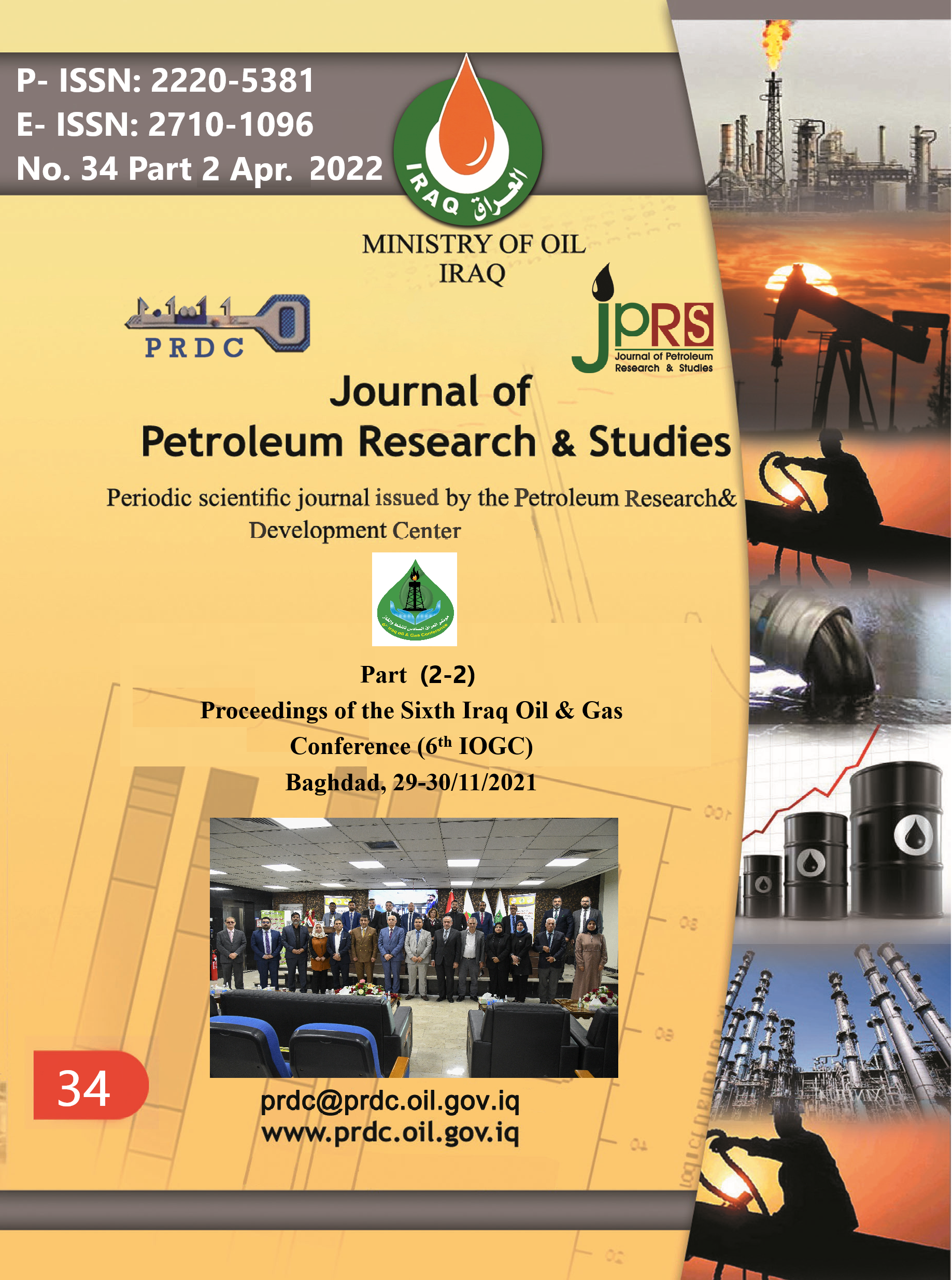Optimizing of Turbine blade spar using Ansys program
DOI:
https://doi.org/10.52716/jprs.v12i1(Suppl.).639Keywords:
Spar, ansys, feasible design.Abstract
The current work involved optimizing the spars of wind turbine blades while taking into account the wind speed quantities that affected the blade structure. The objective was to determine the optimal dimensions of turbine blade spar configurations using the finite element method under the influence of the maximum pressure associated with the first mode shape while maintaining the Von Misses stresses within the assumed safety factor (1.5). (200-230 MPa). The blade was stiffened with a main box spar and two auxillary spars on each side. Appropriate spar locations were specified for poisons with a high natural frequency first mode. The blade parts' dimensions were discretized to allow for greater flexibility and precision in dimension assignment. By utilizing the ANSYS program, the optimization process required a certain number of iterations to modify the blade structure's dimensions. Optimized iteration was considered in order to increase the thickness in areas of high stress and decrease the thickness in areas of low stress. Additionally, a comparison between a blade structure with optimal dimensions and one with non-optimal dimensions was included.
References
Wang Xudong1,2, Wen Zhong Shen1, Wei Jun Zhu1, Jens Nørkaer Sørensen1 and Chen Jin2, “Blade Optimization for Wind Turbines”, 1Department of Mechanical Engineering, Technical University of Denmark, DK-2800 Lyngby, Denmark, 2State Key Laboratory of Mechanical Transmission, Chongqing University, Chongqing, China, 2009.
Jie ZHUa, Xin CAIa,b, Pan PANa and Rongrong GUa, “Optimization design of spar cap layup for wind turbine Blade”, aCollege of Mechanics and Materials, Hohai University, Nanjing 210098, China, bCollege of Water Conservancy and Hydropower Engineering, Hohai University, Nanjing 210098, China, 2012.
Xin Cai1,2, Jie Zhu1, Pan Pan1 and Rongrong Gu1, “Structural Optimization Design of Horizontal-Axis Wind Turbine Blades Using a Particle Swarm Optimization Algorithm and Finite Element Method”, 1College of Mechanics and Materials, Hohai University, Nanjing 210098, China; E-Mails: [email protected] (X.C.); [email protected] (P.P.); [email protected] (R.G.) 2College of Water Conservancy and Hydropower Engineering, Hohai University, Nanjing 210098, China, 2012.
Gaetan Kenway and Joaquim R. R. A. Martinsy, “Aerostructural Shape Optimization of Wind Turbine Blades Considering Site-Specific Winds”, University of Toronto Institute for Aerospace Studies, Toronto, Ontario, Canada, M3H 5T6, 2008.
J.S. Rao1, Bhaskar Kishore2 and Vasantha Kumar3, “Weight Optimization of Turbine Blades”, 1Chief Science Officer, Altair Engineering, 2Project Engineer, Altair Product Design, 3Project Manager, Altair Product Design, 2011.
Wen-Bin Young, “Optimization of the skin thickness distribution in the composite wind turbine blade”, Dept. of Aeronaut & Astronaut, Nat. Cheng Kung Univ, Tainan, Taiwan, 2011, pp.62-66.
Box, G.E.P., Hunter, W.G. and Hunter, J.S., “Statistics for Experimenters”, John Wiley & Sons, Chapter 10, 1978.
Tae gyun (Tom) Gwon, “Structural Analyses of Wind Turbine Tower for 3KW Horizontal Axis Wind Turbine”, California Polytechnic State University, San Luis Obispo Follow, 2011.
Pabut, O., Allikas, G., Herranen, H., Talalaev, R. & Vene, K, “Model Validation and Structure Analysis of A Small Wind Turbine Blade”, International DAAAM Baltic Conference, INDUSTRIAL ENGINEERING, 2012.
Zhengzhou Zhongxin Aluminum and Cable, “top quality 2024 aluminum sheet manufactures”, China (Mainland),
http://www.alibaba.com/productgs/569418181/top_quality_2024_aluminum_shee_ metal.html., 2012.
Downloads
Published
How to Cite
Issue
Section
License
Copyright (c) 2022 Firas Thair Al-Maliky, Dhurgham A. Kadhim

This work is licensed under a Creative Commons Attribution 4.0 International License.














